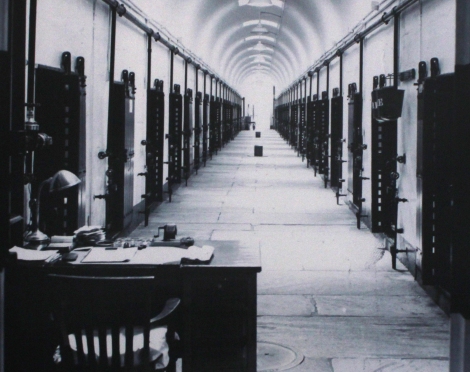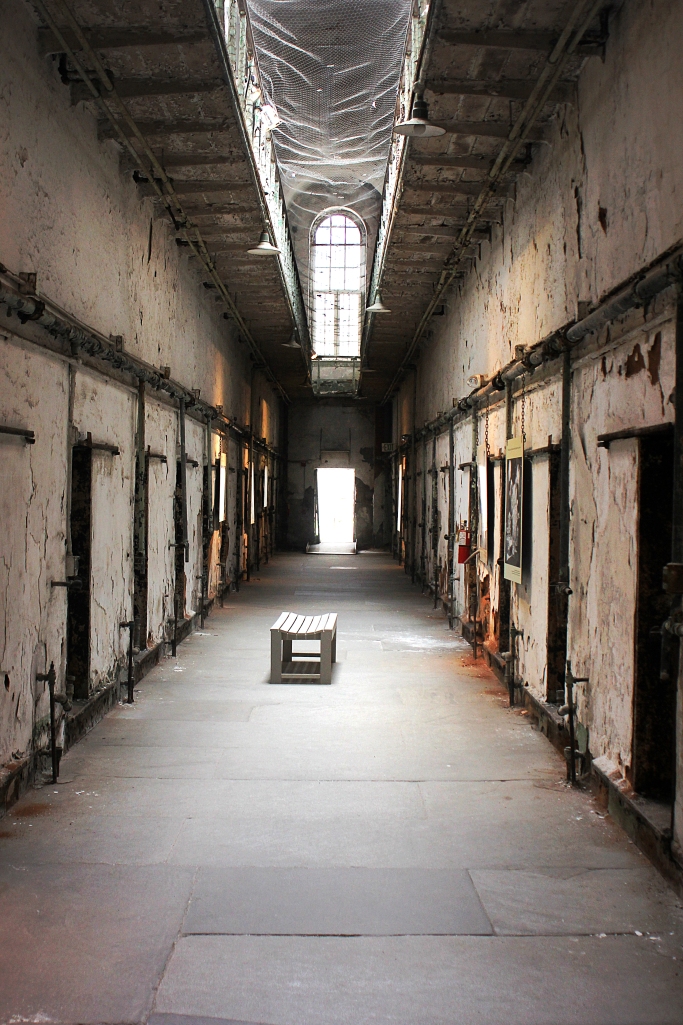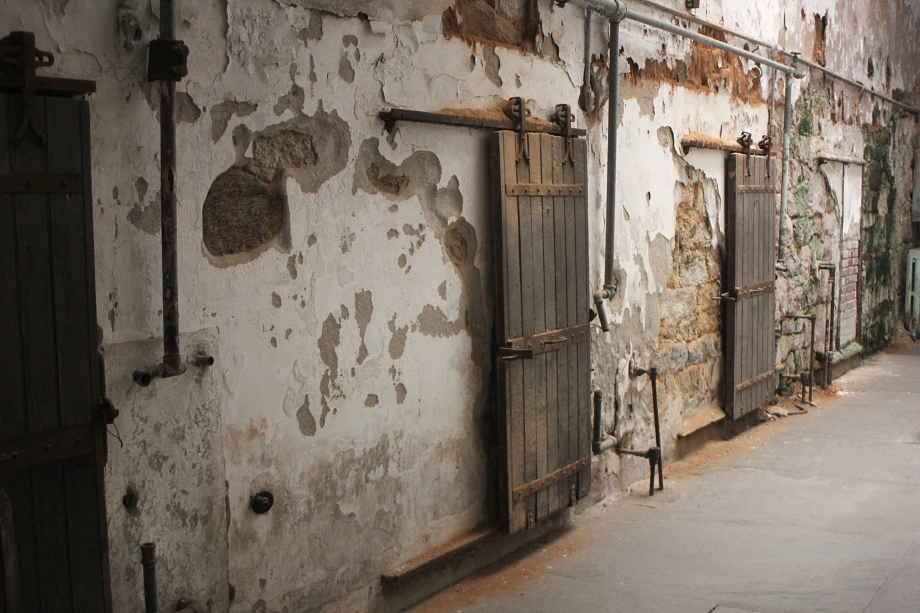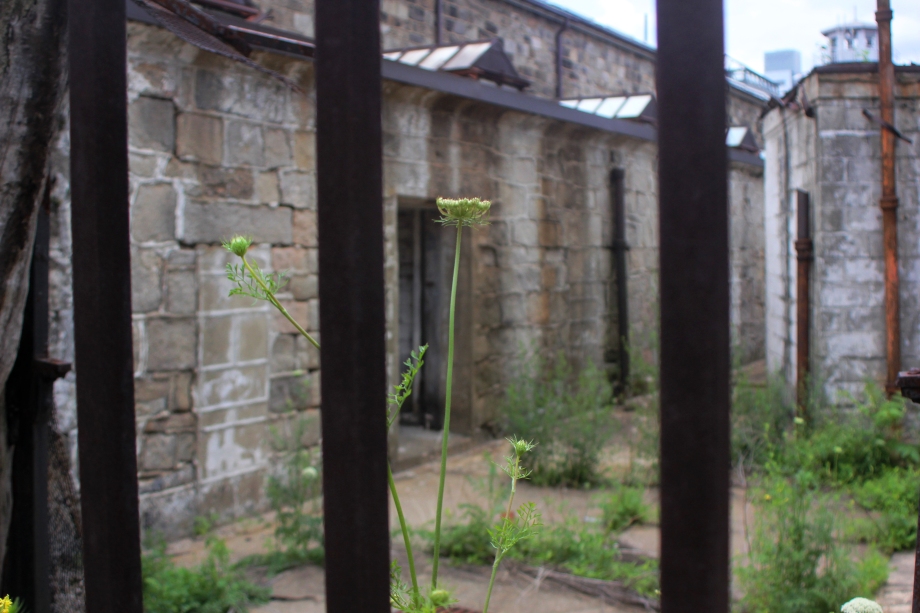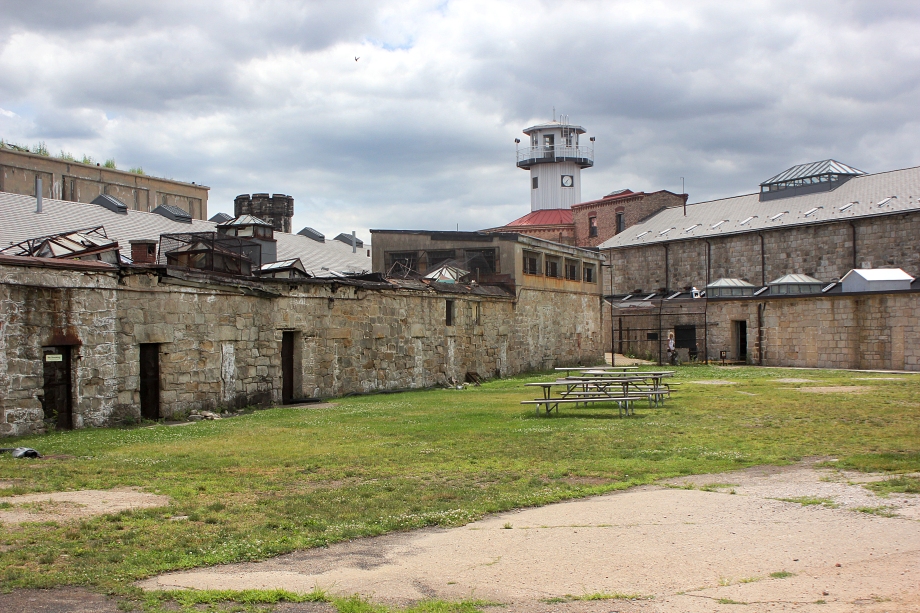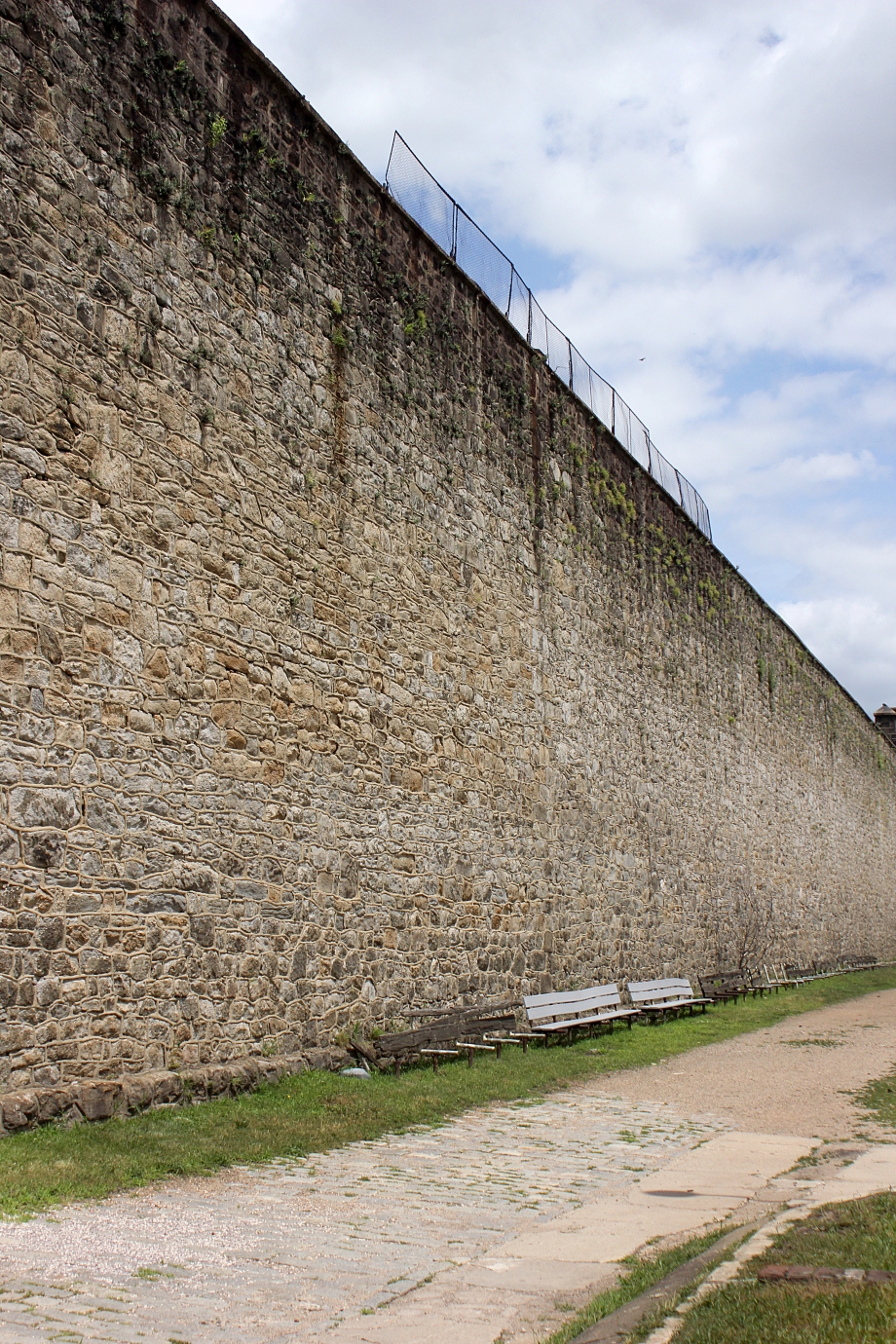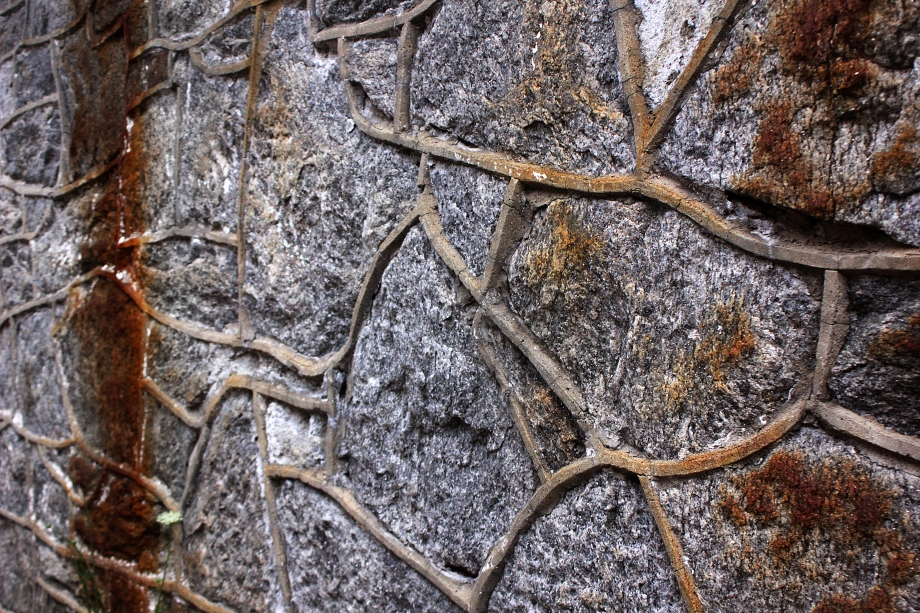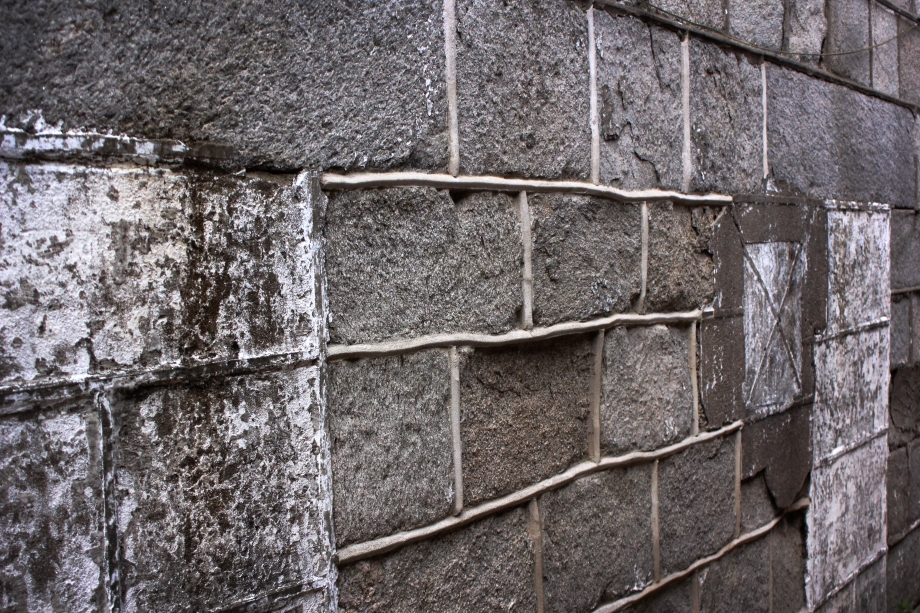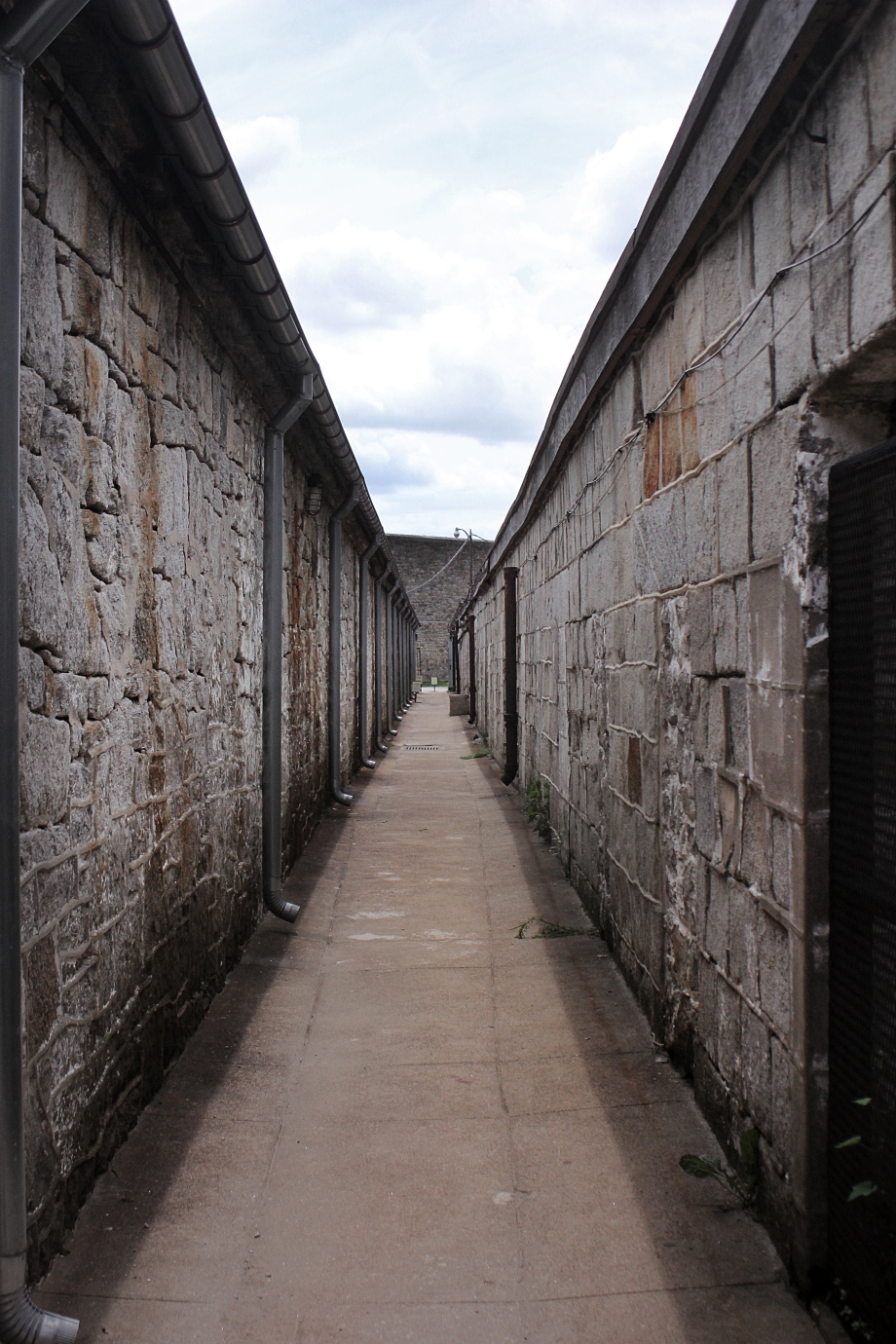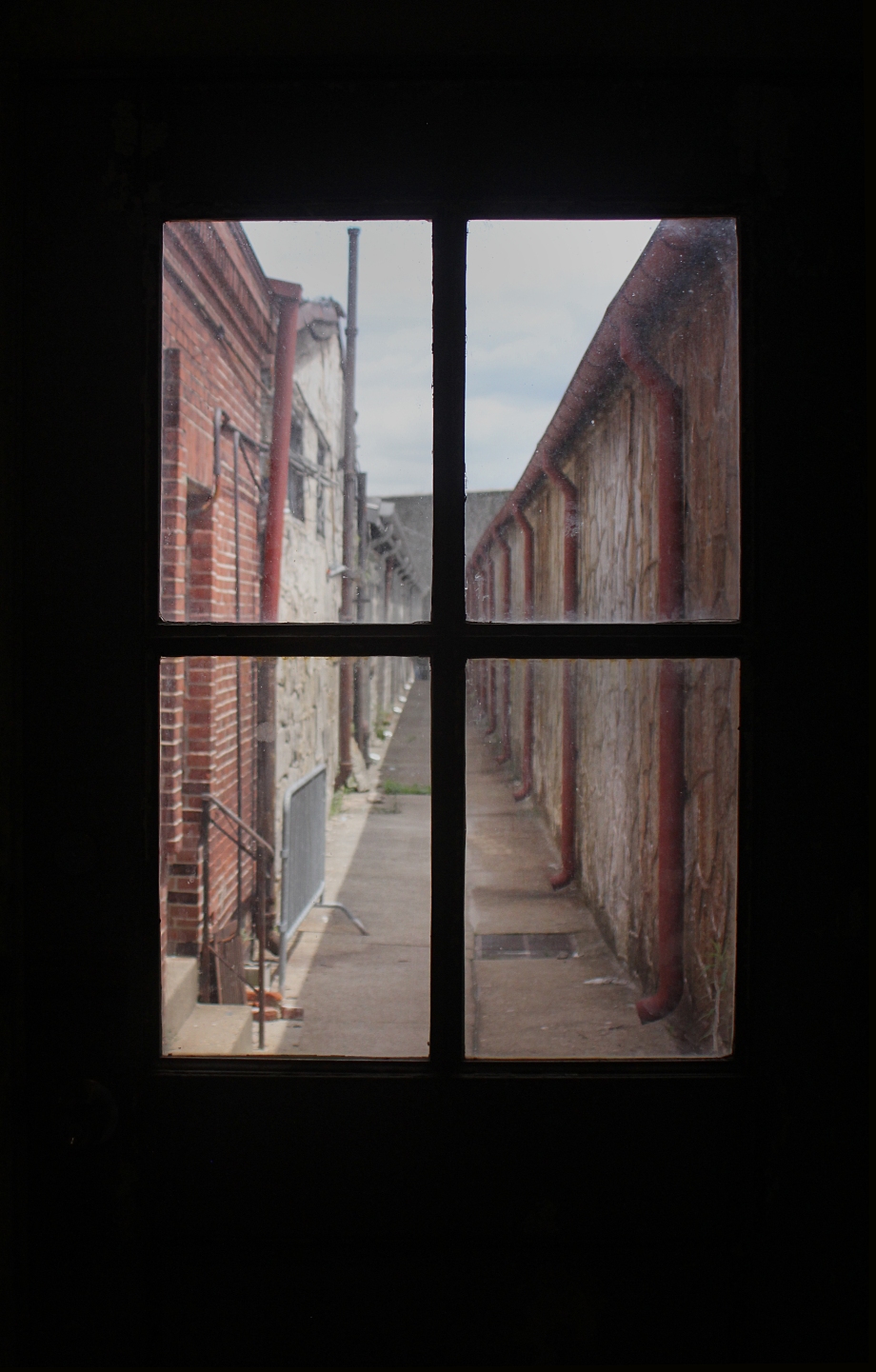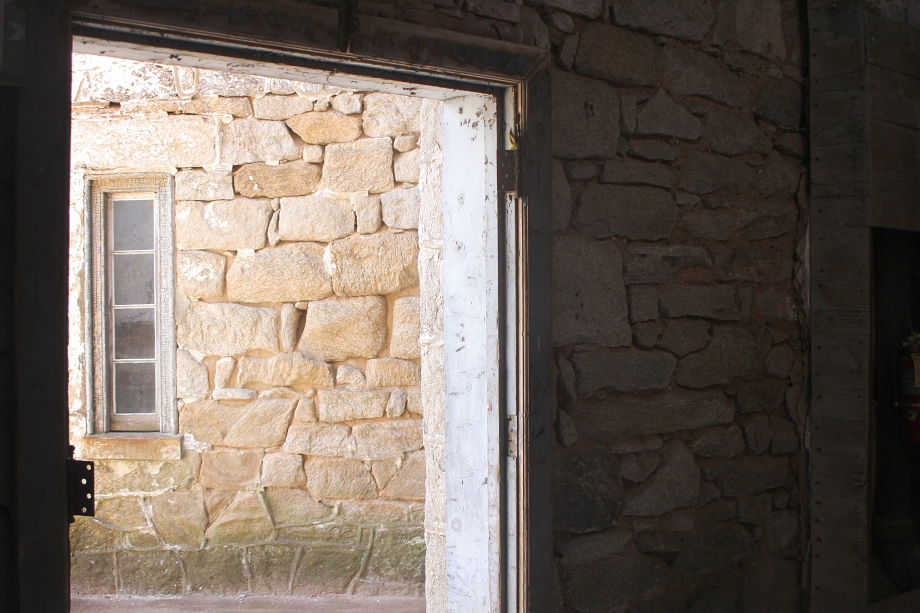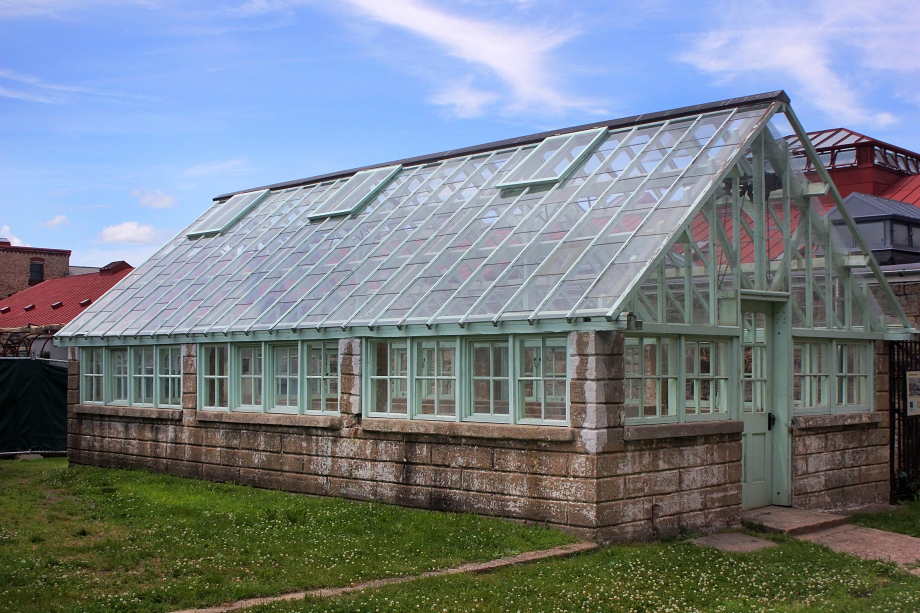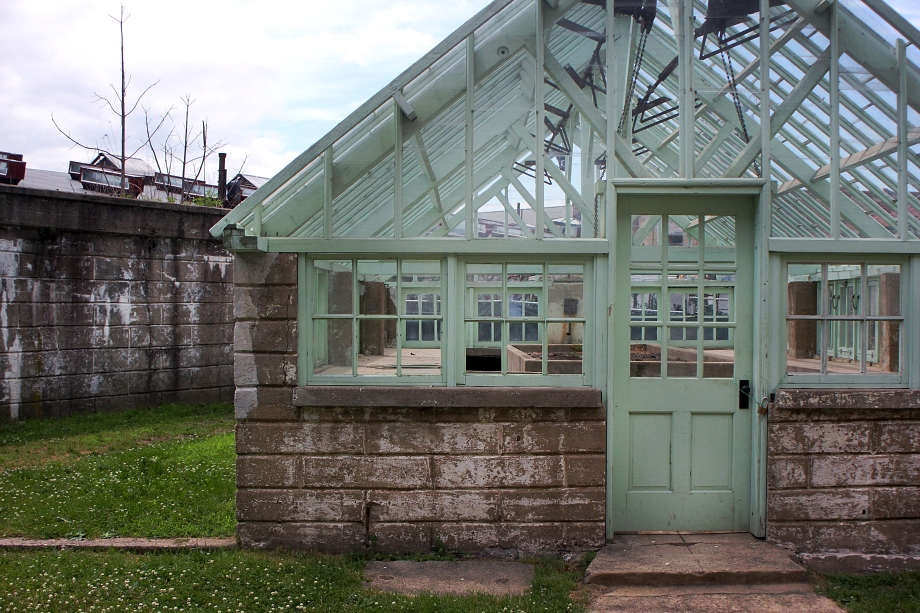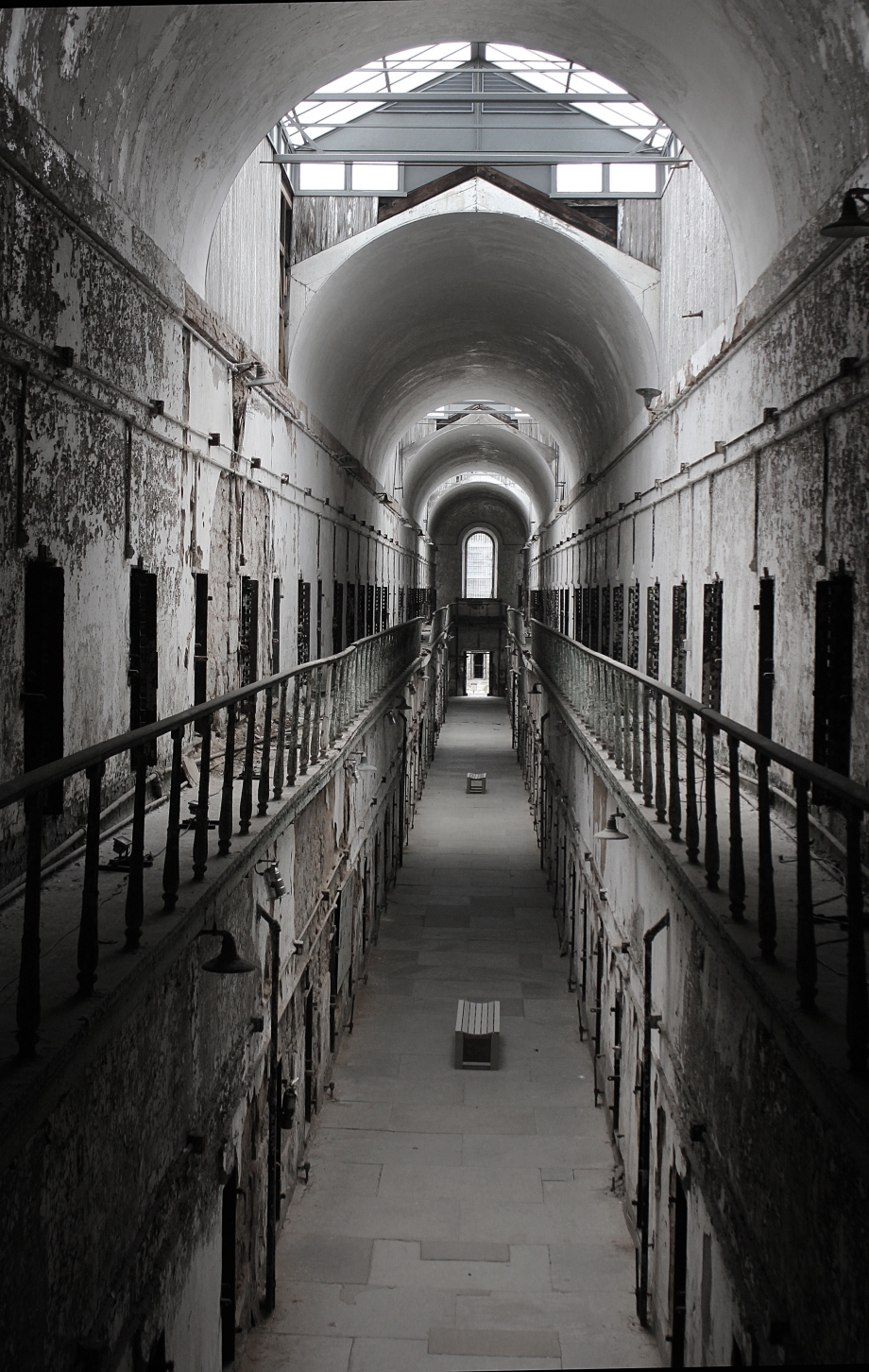On June 26th I went to visit Eastern State Penitentiary in Philadelphia. It was an insightful look the massive penitentiary that stands in the middle of the Fairmount area of Philadelphia. The penitentiary was designed by John Haviland and opened in 1829 on October, 25th. There were three original cell blocks ranging out from a central surveillance hub. In 1831, Four more cell blocks were added to accommodate more prisoners. These cell blocks had two floors so as to accommodate more prisoners. In 1877 Four more cell blocks were added between the original blocks and these cell blocks did not have outdoor access. The first image shows what the cell block looked like in the 50’s and this is what the cell block looks like today.
Each cell consisted of a bed, a toilet and a small door leading to an outside area. Not all cells had doors that lead to the outside. The cells built later between the original 7 cell blocks did not have doors in the cells to the outside. There was a small window in the top ceiling of each cell that the architect called “The Eye of God.” The doors to enter the cells were small so the prisoners had to bow to get through the door. The high vaulted ceilings in some of the cell blocks had tall vaulted ceilings and felt like a cathedral at times. It is said that the penitentiary was not meant to simply punish prisoners, but push them towards spiritual reflection and change in behavior.
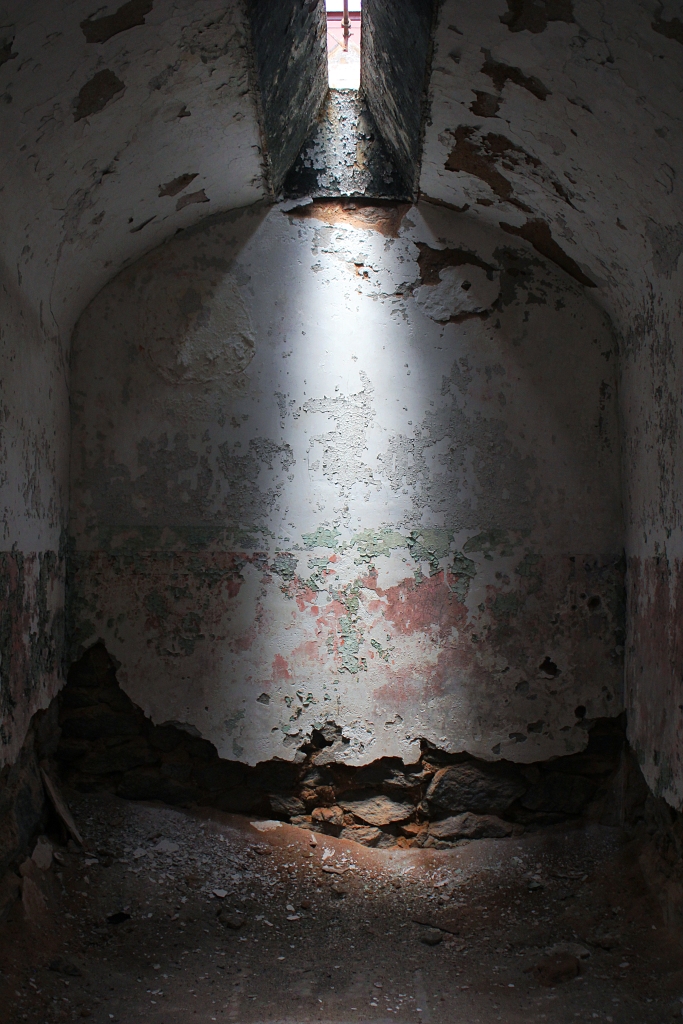
Small prisoner cell. Measures 8×12 ft. The window above was called “The Eye of God” by architect John Haviland.
In seven of the cell blocks, cells had doors that lead to an outdoor areas. Seeing these cells made me feel like the prisoners were kept like animals at the zoo.
Prison walls are high. It’s a very claustrophobic feeling to be within the prison walls and in the cell blocks.
The outside walkways leading to a from cell blocks are claustrophobic. You feel small within the walls of the penitentiary.
The walls at close inspection were interesting. They were like looking at giant maps of cities. Roadways and land masses. I enjoyed looking at the walls.
It was interesting to be inside the dark cell blocks, reading and learning about the history and then moving from inside to outside and how bright the light was and how amazing the breeze felt walking outside. Feeling the breeze on my skin after being within the prison walls for an hour felt fantastic. I can only imagine what this outside area meant to the prisoners.
What I found most interesting was the way light came into the pentitentiary. It was well thought out by the architect. How much light to let in and where. Light affects us as human beings. It is an important part of a healthy life. The prison was dark. The cell blocks were tall and light fell in from high windows. The penitentiary cells were small and dark save the small window above letting a small sliver of light into the cell.I had the chance to go down and look into the isolation hall. You had to walk down a number of steps and bend down in order to walk into a narrow and dark corridor. They said the prisoners did not see light. They did not have anything in their cells with them. They would sit sometimes for days and weeks. The lack of light and contact with anything natural was evident as some prisoners would go mad upon returning from isolation. Outside, to the left of the isolation pit, stood the remains of a green house. I saw this as a structure of hope or a looking towards the future for the prisoners. They used this as a way for prisoners to gain skills that they could potentially use in the outside world when they were released. Many of the prisoners, later in the use of the penitentiary, enjoyed going there because tending to the plants was a calming, enjoyable way to pass time.
NEXT TIME: ‘Portraits of a Cell’ – a personal series I put together.
Have you ever visited Eastern State Penitentiary in Philadelphia? Shoot me a message or leave a comment about your experience or any questions you have about this post!
